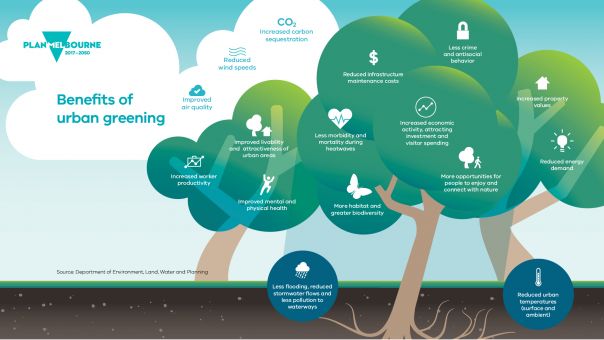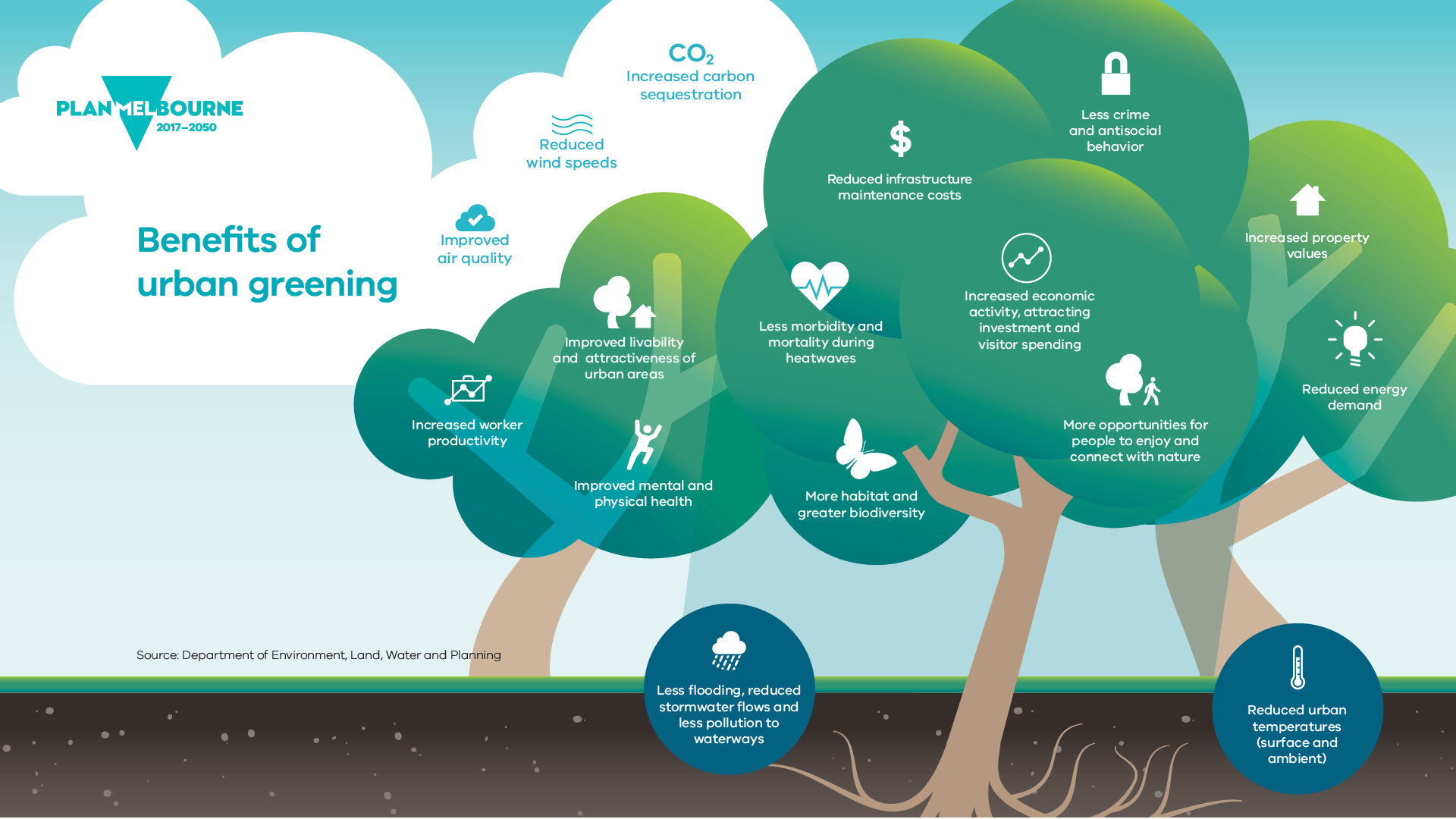Victoria is the fastest growing state in Australia and is expected to support 11.2 million people by 2056. 9 million of those people will live in Melbourne.
Cooling and greening Melbourne and increasing sustainability and resilience through green infrastructure, is a priority.
We need to plan for green infrastructure the same way we do for grey infrastructure, so we can:
- enhance urban amenity and quality
- improve landscape connectivity
- build resilience to climate change.
This is achieved by:
- protecting existing green spaces
- creating new opportunities for urban greening
- improving water sensitive urban design
- greening buildings, for example, roofs, facades and walls
- increasing permeable surfaces.
We have identified the importance of green infrastructure to create more liveable and climate adapted communities. Our approach is outlined in our strategic policies and plans highlighted below.
Plan Melbourne – action 91
Plan Melbourne recognises the urban heat island effect, the role of climate change, the benefits of urban greening, and the challenge of greening a rapidly-growing city that is also becoming denser:
- Outcome 6 – Melbourne is a sustainable and resilient city.
- Direction 6.4 – Make Melbourne cooler and greener.
Action 91 in the Plan Melbourne Implementation plan commits to developing a whole-of-government approach to cooling and greening Melbourne. It is a short to medium term action: 0-5 years.
Action 91 sets out a broad work program to expand and enhance Melbourne’s urban forest. This includes:
- improving spatial data
- supporting councils with their urban forest strategies
- setting regional targets
- establishing a green infrastructure grants program
- developing new guidelines and regulations to support greening subdivisions and developments
- creating green infrastructure demonstration projects
- greening state-owned land
- investigating how alternative water sources can support greening initiatives.
Action 91 has a number of interdependencies including:
These actions will also benefit from greener streetscapes and ongoing urban vegetation and heat mapping.
Green infrastructure
Green infrastructure describes the green spaces, trees, soils and water systems that intersperse, connect and provide vital life support for all of us and the other various fauna species within our urban environments.
Melbourne’s network of green spaces includes a range of public and private green infrastructure assets, including:
- parks and reserves
- backyards and gardens
- green roofs and walls
- rain gardens
- waterway and transport corridors that provide important green linkages.
Importance of green infrastructure
Green infrastructure is essential for community health and wellbeing and for maintaining the natural ecosystems on which we depend. It reduces the impacts of climate events such as flooding and heatwaves, and underpins our economy in areas such as health, liveability and industry.
In dense urban environments, the urban heat island effect can cause urban areas to be up to 4 °C hotter than surrounding non-urban areas. The built environment can absorb, trap and in some cases, directly emit heat due to the prevalence of heat absorbing materials such as:
- dark coloured pavements
- roofs
- concrete
- urban canyons trapping hot air
- lack of shade and green space.
Green infrastructure reduces urban heat through both shading and evapotranspiration. Temperature decreases of even 1-2 °C can have a significant impact on reduced heat related morbidity and mortality.
Greening the city can also help protect waterways and reduce flooding through improved stormwater management, improve air quality, and reduce energy costs.
Green infrastructure supports biodiversity and enhances liveability and community wellbeing by connecting people to nature, which is fundamental to the physical and mental health of every Victorian.

